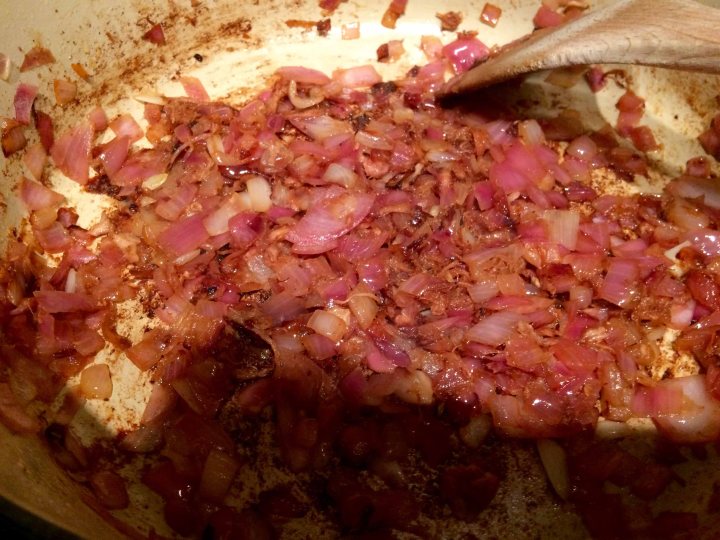More often than not, I let what’s available or on sale at my market determine what I will be making for dinner that night. When I found pork loins on sale for $4 off a pound at my local Whole Foods, my menu was set. Knowing that I would be cooking only for two, I chose a small two-pound center-cut roast.
Originally, I though I would prepare it braised in milk, a recipe that I have previously posted on this blog. But when I returned home, a bottle of Chianti Classico that we had received as a Christmas gift caught my eye and it brought to mind the many times I enjoyed this wine with a classic roasted pork loin whenever I was in Tuscany, where it is commonly known as arista.
In the past, I’ve always made this roast for a get together and used a larger piece of meat. But mind was now set on having arista even if it would be a diminutive aristina.
The recipe I chose was from the Williams-Sonoma Essentials of Italian cookbook. Although the recipe called for a five-pound roast, I didn’t adjust the amount of herbs or oil for my two pounder. I did, however, reduce the number of garlic cloves to three, and not having any fresh sage at home, I doubled the amount of rosemary. Because it was quite late when the roast was done and we were both starving, I skipped the pan sauce. The roasted onions were enough of a condiment.
I also served Italian roasted potatoes, which I cooked at the same time as the roast. Although the recipe I used called for much hotter oven (425°F), I simply let the potatoes cook at the same temperature as the roast (325°F) and they were perfectly done at the same time as the meat.
As you probably noticed, there are no photos in this post. I can only say that while I was cooking, my photographer was at work, and by the time the food was on the table, neither of us was thinking about the blog. But despite not having any photos, I thought this dish was so good, I had to write it up.
Herb-Roasted Pork Loin from Williams Sonoma Essentials of Italian
Ingredients
4 large garlic cloves
2 tablespoons fresh rosemary leaves
2 tablespoons fresh sage leaves
2 teaspoons crushed fennel seeds
Sea salt & freshly ground black pepper, to taste
1 bone-in pork loin roast, about 5 lb
4 tablespoons olive oil
1 yellow onion, halved and sliced
1 cup dry white wine, such as Pinot Grigio
Directions
Preheat an oven to 325°F.
Using a chef’s knife, very finely chop together the garlic, rosemary and sage. Transfer to a small bowl, add the fennel seeds, season with salt and pepper, and mix well. Make slits 1/2 inch deep all over the pork roast and insert some of the mixture into each slit. Rub the roast with the remaining seasoning, then rub with 2 tablespoons of the olive oil. Place the meat in a roasting pan just large enough to hold it.
Roast the meat for 1 hour. In a bowl, toss the onion slices with the remaining 2 tablespoons of olive oil and scatter them around the meat. Continue to roast until an instant-read thermometer inserted into the thickest part of the roast, away from the bone, registers 155°F, or the meat is pale pink when cut into at the center, about 1 1/4 hours more. Transfer to a warmed platter and cover loosely with aluminum foil to keep warm. Let rest for 15 minutes before carving.
Note: I cooked my two pound roast for two hours. Although it was very good, the next time I cook such a small roast, I might reduce the cooking time slightly.
Meanwhile, pour off most of the fat in the roasting pan and place the pan over medium-low heat. Add the wine and deglaze the pan, stirring to scrape up any browned bits from the pan bottom. Simmer until the sauce is slightly reduced.
Carve the roast and arrange on a warmed platter. Spoon the pan sauce over the pork and serve at once.
Wine Pairing: Chianti Classico, Rosso di Montalcino







